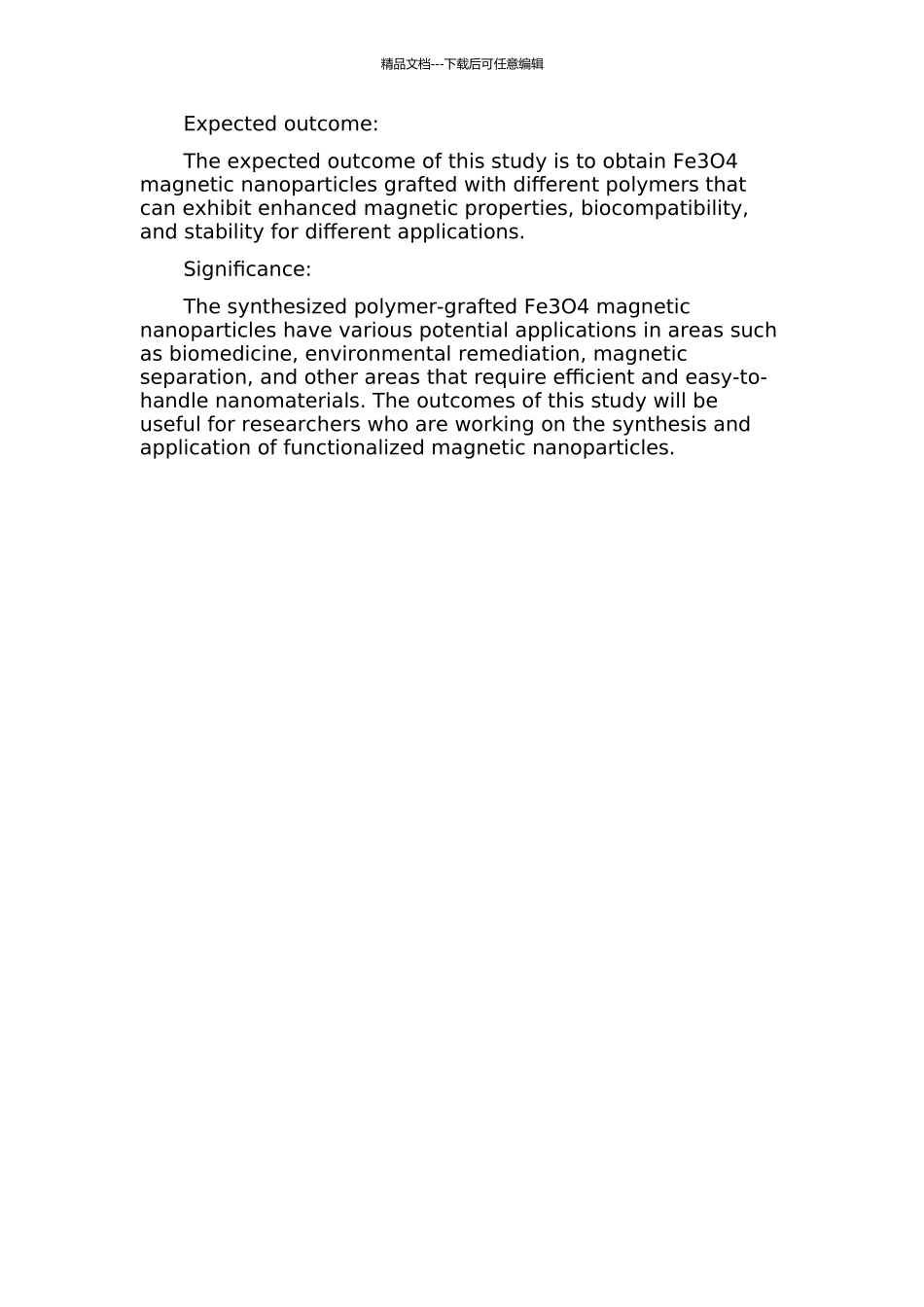精品文档---下载后可任意编辑Fe3O4 磁性纳米颗粒表面接枝聚合物制备的讨论的开题报告Title: Preparation of Polymer-grafted Fe3O4 Magnetic NanoparticlesBackground:Magnetic nanoparticles have gained significant attention in recent years due to their promising applications in various fields such as catalysis, drug delivery, and magnetic separation. Among the various magnetic nanoparticles, iron oxide nanoparticles, specifically Fe3O4 nanoparticles, have been extensively studied because of their superior magnetic and chemical properties. However, the surface of Fe3O4 nanoparticles needs to be functionalized to make them more stable and compatible with various biological and chemical entities. Polymer grafting onto the surface of Fe3O4 nanoparticles is an effective approach to modify their surface properties and improve their performance for different applications.Objective:The main objective of this study is to prepare polymer-grafted Fe3O4 magnetic nanoparticles and evaluate their properties.Methodology:1. Synthesis of Fe3O4 nanoparticles by co-precipitation method.2. Surface modification of Fe3O4 nanoparticles by a linker molecule such as Silane.3. Synthesis of monomers and initiation of polymerization reaction to graft polymers onto Fe3O4 nanoparticles.4. Characterization of the prepared polymer-grafted Fe3O4 nanoparticles using different techniques, including Fourier-transform infrared spectroscopy (FTIR), Scanning electron microscopy (SEM), Transmission Electron Microscopy (TEM), X-ray diffraction (XRD), and Vibrating Sample Magnetometer (VSM).精品文档---下载后可任意编辑Expected outcome:The expected outcome of this study is to obtain Fe3O4 magnetic nanoparticles grafted with different polymers that can exhibit enhanced magnetic properties, biocompatibility, and stability for different applications.Significance:The synthesized polymer-grafted Fe3O4 magnetic nanoparticles have various potential applications in areas such as biomedicine, environmental remediation, magnetic separation, and other areas that require efficient and easy-to-handle nanomaterials. The outcomes of this study will be useful for researchers who are working on the synthesis and application of functionalized magnetic nanoparticles.

